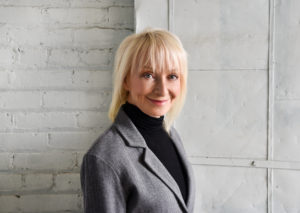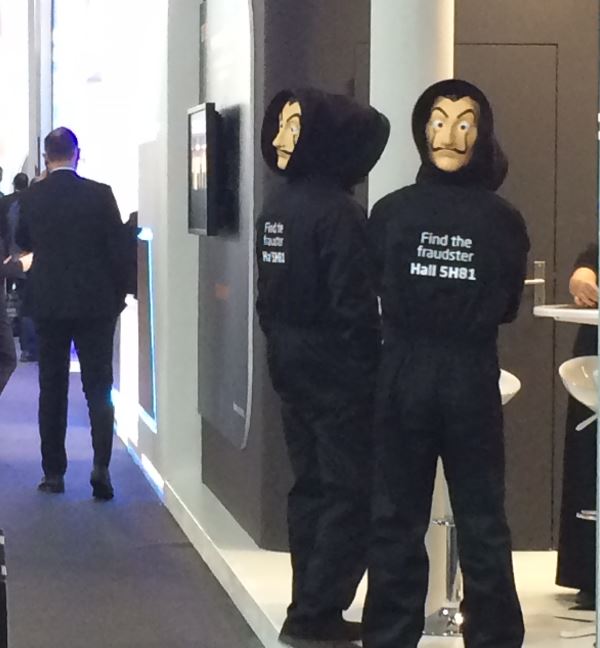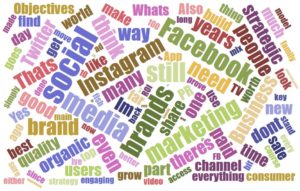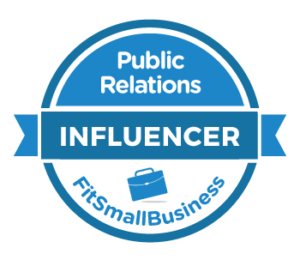Today I share Deborah Weinstein’s answers to questions about the  challenges confronting social media marketing and digital communications. It is the latest in my series of interviews with industry experts (see this post, which sets the stage).
challenges confronting social media marketing and digital communications. It is the latest in my series of interviews with industry experts (see this post, which sets the stage).
My good friend Judy Gombita introduced us, and I am glad that she did. As you will see below, Deborah offers great insight. She leads Toronto-based Strategic Objectives with co-founder and sister, Judy Lewis. Deborah is a recognized thought leader and speaker, and a former journalist with numerous awards including the Queen’s Diamond and Golden Jubilee Medals for Outstanding Service to Canada and its Communications Industry, and the United Nations Grand Award for Outstanding Achievement in Public Relations (and an impressive Twitter following to boot; see Deborah Weinstein’s full bio).
Thanks for participating, Deborah Weinstein!
Digital marketing is constantly changing. There’s more competition online and on social media than ever before. So, my question is: are the social media waters still safe for marketing?
I can honestly say I have never experienced a more exciting, opportunity-laden time for PR pros to flex our strategic, ROI generating creative muscles, and prove our worth in the business world since I hopped the fence from journalism to found Strategic Objectives (our Toronto-based PR agency dedicated to helping brands tell better, more effective, sales-driving stories) back in the 80s.
Technology has transformed everything we do, from our ability to swiftly discover and tightly target key opinion leaders (be they journalists, politicians, shareholders, stakeholders, or all of the above) with relevant, credible information-to our proven power to build robust virtual communities by creating enticing, engaging bridges to the brands we represent.
The thing about digital marketing is that to fill your net you have to fish where the fish are. And social, with its free and open access; bountiful, ever-shifting demographic landscapes; bright, new shiny platforms; trolls and black holes, represents an ocean of opportunity marketers simply cannot afford to ignore.
Of course there are challenges, but in the ever evolving business of social PR, fortune goes to the brave, and the smart.
Thank you for that answer. You said that fortune goes to the smart so I’m curious – Have you been recommending a change in strategy regarding social media?
Far too many brands delegate, and relegate social strategy development and implementation to their ad agencies, internal marketing departments, even their PR intern, with a mandate to replicate, share, and spread commercial messages. They forget, or worse still ignore the main reason people converge on social media, which is to build and maintain connections through P2P (person to person) communication with friends, family, mentors, colleagues, newsmakers and other HUMAN beings.
My best advice for Marketing PRs and CMOs looking to bond with, and move social consumers to action is to adopt the content marketing approach I like to call our Strategic Objectives 4 H Club: Be Human. Be Honest. Be Helpful. Be Humble. All human qualities known to make friends and influence people.
Brands must also make sure their community manager or agency has the experience, curiosity, and imagination needed to conceive, implement and measure their social efforts.
Influencer Marketing-recruiting, measuring, managing and supervising the production and spreading of top quality content from trustworthy, inspiring key influencers, spokespeople and brand ambassadors has become an important part of our Strategic Objectives business model. We expect it to grow exponentially in scope and impact in the years to come.
It’s all a very long process so what comes after social media?
We have reached a tipping point in marketing communications where the sum of a campaign’s parts are far greater than its individual components and it has never been more important for brands to completely integrate every aspect of their brand-building (and protection) activities to achieve optimal impact.
This means not relying on social media or any one channel. E.g. Strategic Objectives pivoted with the times to offer everything needed to fulfill the PESO model – Paid, Earned, Shared, Owned – conceived to integrate MarComs. Services now include everything from consumer listening to mainstream and social media relations; crisis/reputation management; digital, video and graphics production; influencer, sponsorship, and cause-related marketing; and nation-wide experiential activations. Why so many disciplines? Because to steal a page from US politics, “You’re either at the table, or you’re on it!”
Is Facebook still a good place to invest in social media marketing?
If there’s one thing that’s constant in the social world … it’s change. And Facebook, long the Goliath in the social world may be cruising for a bruising.
Recent stats from PEW Research show 49% of Facebook users aged 18-29 (many of our clients’ most coveted demographic) have deleted the FB app from their phone in the last year. Hardly a day goes by on Twitter without my seeing some social guru declaring they’re done with Facebook. So if the early adopters, plus the frequent users are leaving the building what’s next?!
Enter Instagram with its snazzy pix, short fancy text captions, easy engagement, and non-stop roll out of exciting new features; and What’s App, that so easily facilitates micro-community building and sharing. Both owned by Facebook, they’ll keep the monolith steady, despite its privacy scandals, for years to come. And let’s face it, Facebook the platform still has the numbers and access to consumer insights brands adore. My prediction is that social platforms will continue to morph, expand, contract and disappear following in the iconic footsteps of My Space and Google+. Face it, embrace it, change is good!
Have these changes affected your social media habits for personal brand building?
Personal brand building has never been my goal with social media participation. I used to be much more active, having started out on Twitter more than 10 years ago @debweinstein. Those were inspiring times featuring a head-spinning global cast of marketing characters who were always happy to comment, engage and share, 24/7. Through the years I’ve made many real-world connections with the thought leaders I met virtually years ago, and watched them grow fame and fortune, migrate to other platforms, develop full-time pursuits, and even entirely disappear.
I’m no longer hyperactive on Twitter, but still push out several tweets a day to keep our SO team, and my community up-to-date on social advents and need to know news.
I love Insta and use it @deborahweinstein to experiment and test my social skills and instincts with real friends and netizens around the world. But it takes hours of time a day to be a good, engaging social citizen – liking, reciprocating, commenting, posting – which is time I simply don’t have. This makes me feel guilty, and even less likely to participate.
What’s App is my Godsend for family communication, and my FB usage has almost completely dwindled to group participation (shout out to PRSA Counsellors Academy!).













